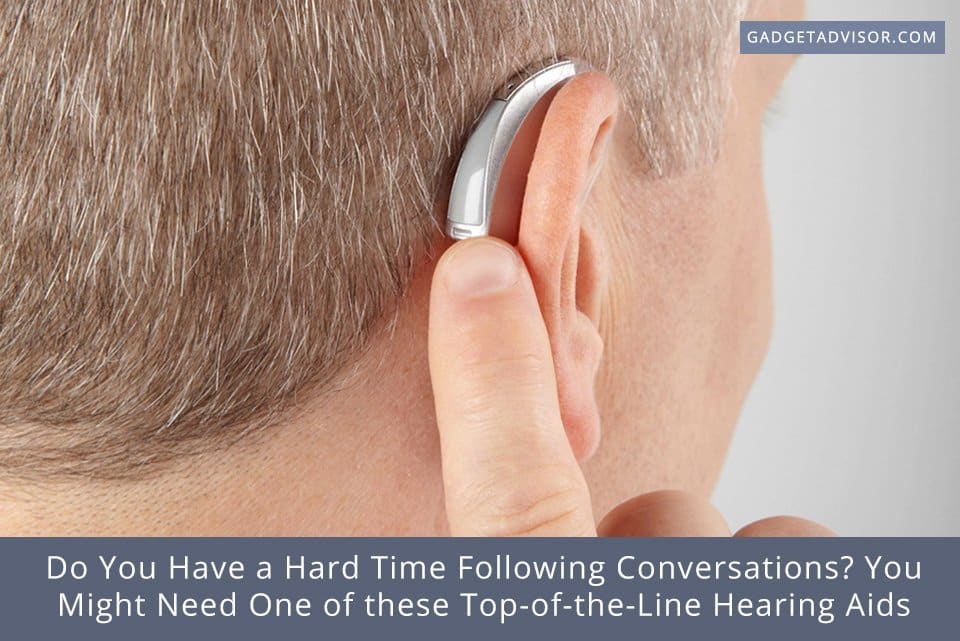Being hearing impaired is no fun. It often means missing out on meaningful conversations, saying ‘what?’ a lot and being told that you’re speaking way too loudly – that is, if you don’t find yourself screaming just to be able to hear your own voice. But hearing aid technology has come a long way since the iconic ear trumpet. Today, people with hearing loss (and even tinnitus) can wear in their ears hearing aid devices that are so small they are virtually invisible, and so comfortable they may forget they’re wearing them entirely. An impressive 95 percent of hearing impaired patients can be helped thanks to these hearing aids. Here are a few types of these top-of-the-line gadgets.
In-the-Ear Hearing Aids
These are the smallest and most discreet hearing aids available. The devices fit completely inside the ear, making them near-impossible to see. Certain brands of in-the-ear hearing aids, like Lyric devices, can even be worn 24 hours a day, 7 days a week for extended periods of time, which means that the wearer can put them in and then forget about them until he or she needs to replace the battery. Added advantages are custom fitting, which ensures it feels comfortable for each unique wearer, and light weight, which also aids with comfort and manipulation. These come in various sizes depending on the severity of hearing loss, ear canal size and the manual dexterity of the wearer – the smaller the device, the trickier it is to insert into place.
Behind-the-Ear Hearing Aids
While still discreet, behind-the-ear hearing aids are somewhat larger than in-the-ear devices because, as their name implies, the sound amplifying mechanism sits behind the wearer’s ear. From there, sound carries through a tube that is connected to an ear mold that sits inside the ear. These hearing aids are comfortable, durable and come in a variety of models to accommodate each individual and unique patient’s needs – as well as their ears. Best of all, these kinds of hearing aids can easily be customized to pair with Bluetooth devices as well as other hearing assistive devices.
Receiver-in-Canal Hearing Aids
Receiver-in-canal devices are the most common hearing aids out there. Similarly to behind-the-ear devices, the receiver-in-canal hearing aids’ mechanism is located behind the wearer’s ear. The difference is that instead of a tube being connected to an ear mold that sits inside the ear, the tube that carries amplified sounds goes in directly in the ear canal. These hearing aids are also discreet and are fitted to each individual wearer for maximum comfort.
You can read more about the different type of hearing aids and get more information on what brands are available and how fitting works here.
I mentioned tinnitus earlier, and I want to come back to it now because I think that it may be helpful for people who suffer from the condition to understand what a hearing aid could do for them. Tinnitus is a life-altering condition that is “characterized by a buzzing, hissing, chirping, whistling, or ringing sound in one or both ears”. These phantom noises, as they are known, can be constant or intermittent and can greatly affect a person’s ability to concentrate, fall asleep or even hear ‘actual’ noises that aren’t caused by tinnitus if the buzzing or whistling they hear is particularly loud or high-pitched. Tinnitus can also cause permanent damage to an individual’s hearing ability.
I was surprised (and delighted) to learn that hearing aids can help people who have tinnitus in a few ways. First, because tinnitus can cause hearing loss, hearing aids will make it easier to hear over the phantom noises for many patients. Additionally, hearing aids can be fitted with a special masking device that helps reduce or eliminate sounds caused by tinnitus through emission of a specific noise that blocks phantom noises.
Permanent hearing loss may not be curable as of yet, but with today’s hearing aids, nearly everyone who is hearing impaired has a good chance of being able to hear normally again.

